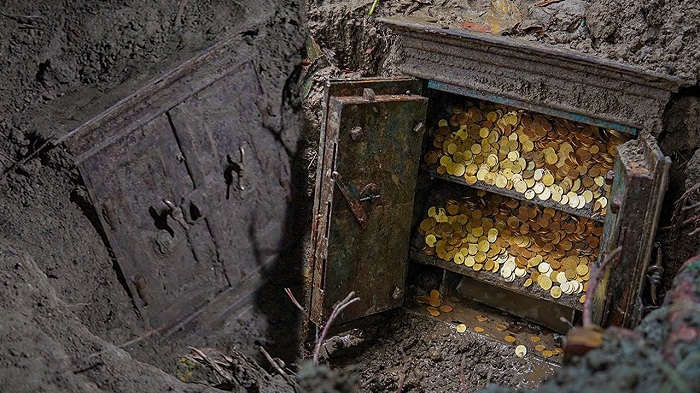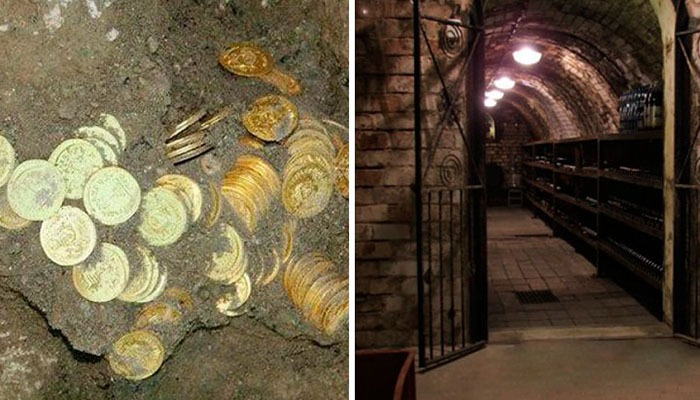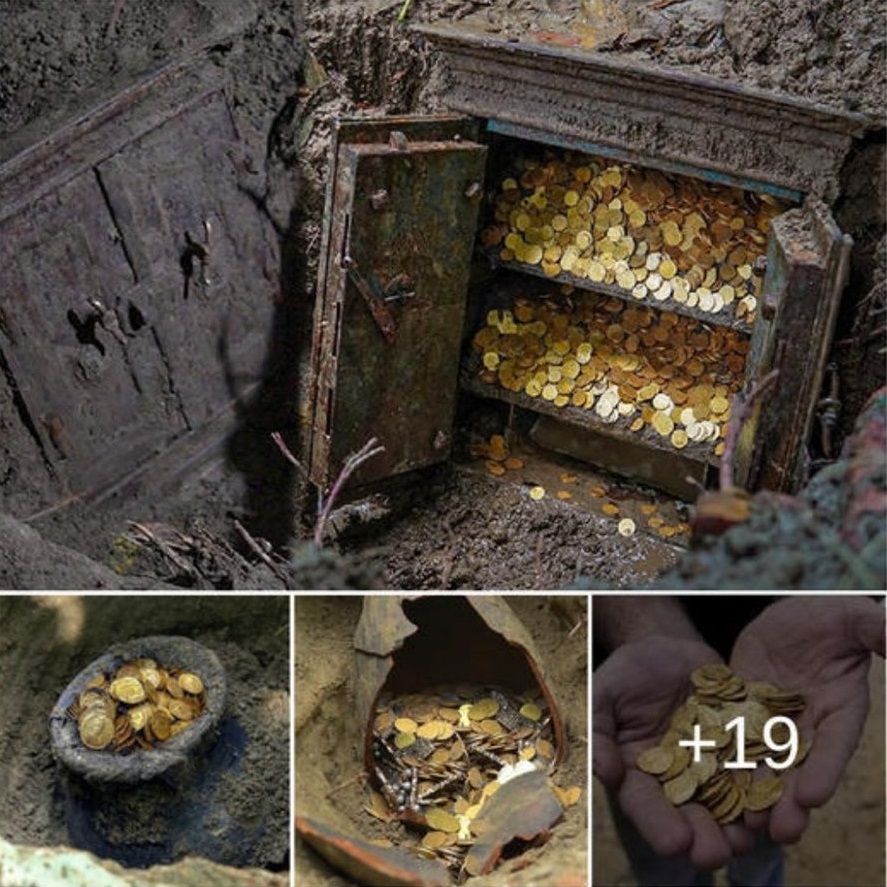In a discovery that echoes the tales of ancient mariners and lost treasures, a trove of 3,000 gold coins, believed to be over 1,000 years old, has been unearthed beneath the Israeli sea. This remarkable find, a testament to the rich history and intricate maritime trade routes of the ancient world, offers an unparalleled glimpse into the past. The coins, gleaming with the luster of antiquity, are more than just a monetary treasure; they are a historical narrative, waiting to be deciphered.

The Discovery of a Lifetime
The underwater excavation, spearheaded by marine archaeologists from the Israel Antiquities Authority (IAA), began as a routine survey off the coast of Caesarea. This ancient port city, known for its historical significance and archaeological richness, has long been a site of interest for historians and treasure hunters alike. However, nothing could have prepared the team for the magnitude of their discovery.
The Initial Find
During a routine dive, a team of divers stumbled upon what appeared to be shimmering coins scattered across the seabed. Upon closer inspection, they realized they had found something extraordinary. What began as a casual observation quickly escalated into a full-scale excavation, with the IAA deploying advanced underwater technology to carefully retrieve the coins.
Unveiling the Treasure
The process of unearthing the coins was meticulous. Each coin was carefully cataloged and transported to a secure facility for further analysis. The IAA reported that the treasure, consisting of approximately 3,000 gold coins, dates back to the Fatimid Caliphate, which ruled a vast region including North Africa, the Red Sea, and the eastern Mediterranean from the 10th to 12th centuries.

The Historical Significance
The discovery of these gold coins is not just a matter of wealth but also of historical importance. The Fatimid Caliphate was known for its economic prowess, and these coins are a testament to the extensive trade networks that existed during their reign. Each coin, bearing intricate inscriptions and symbols, provides valuable insights into the political, economic, and cultural dynamics of the time.
The Fatimid Caliphate
The Fatimid Caliphate, named after Fatimah, the daughter of the Prophet Muhammad, was a major Islamic dynasty that left an indelible mark on history. The coins feature a range of designs, including Arabic calligraphy and religious symbols, reflecting the caliphate’s emphasis on both religion and governance.
The Maritime Trade Routes
The location of the find, near the ancient port city of Caesarea, underscores the significance of maritime trade in the Fatimid era. Caesarea was a bustling hub of commerce, connecting the Mediterranean with the vast networks of the Islamic world. The discovery of these coins suggests they may have been part of a larger shipment, possibly lost in a shipwreck, that was destined for trade.

The Archaeological Process
Recovering and preserving underwater artifacts is a complex and delicate process. The marine archaeologists employed state-of-the-art technology to map the site and ensure the coins were retrieved without causing damage to their fragile structure.
Advanced Underwater Technology
The use of advanced underwater metal detectors, sonar mapping, and remote-operated vehicles (ROVs) allowed the team to conduct a thorough survey of the area. Each coin was carefully extracted from the sand and sediment, ensuring its preservation.
Conservation Efforts
Once retrieved, the coins underwent a rigorous conservation process. Saltwater can cause significant deterioration, so the coins were treated to prevent further corrosion. This involved desalination, cleaning, and stabilizing the metal to preserve the inscriptions and designs.

The Cultural Impact
The discovery of these gold coins has generated immense interest, not just among historians and archaeologists, but also the general public. Exhibitions are being planned to showcase the coins, allowing people to witness this incredible find firsthand.
Educational Opportunities
Museums and educational institutions are collaborating with the IAA to create exhibits that will educate the public about the Fatimid Caliphate and its historical significance. These exhibits will feature interactive displays, providing visitors with a hands-on learning experience.
Media and Public Interest
The story of the 3,000 gold coins has captured the imagination of people worldwide. Media outlets have been quick to report on the discovery, highlighting its historical and cultural importance. This has sparked a renewed interest in underwater archaeology and the rich history hidden beneath the seas.
The discovery of 3,000 1,000-year-old gold coins under the Israeli sea is a treasure trove not only in terms of wealth but also historical significance. This find offers an extraordinary glimpse into the past, shedding light on the Fatimid Caliphate and the extensive trade networks that connected the ancient world. As these coins are studied and displayed, they will continue to reveal the rich tapestry of history they represent, captivating and educating future generations about the wonders of our shared heritage.

